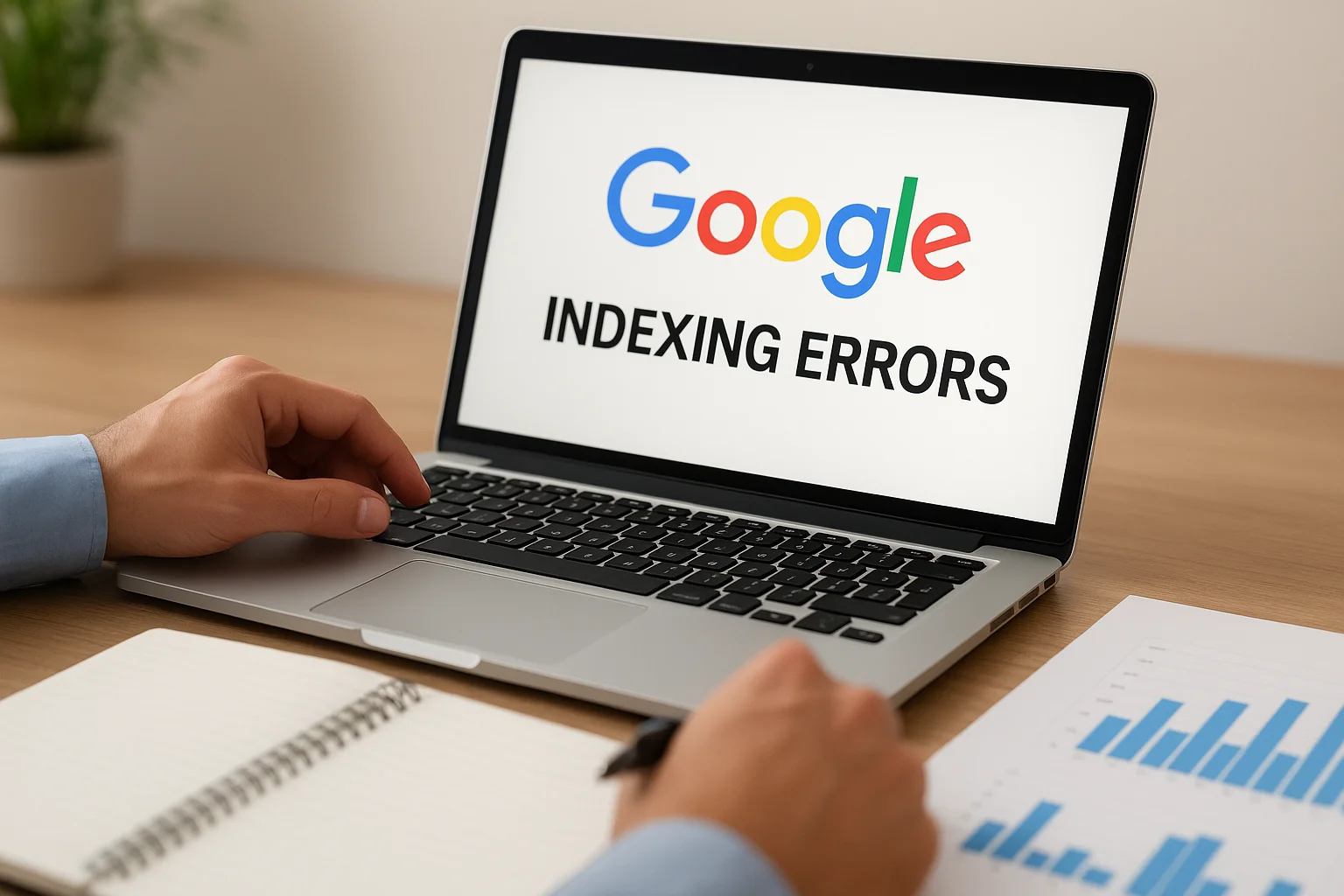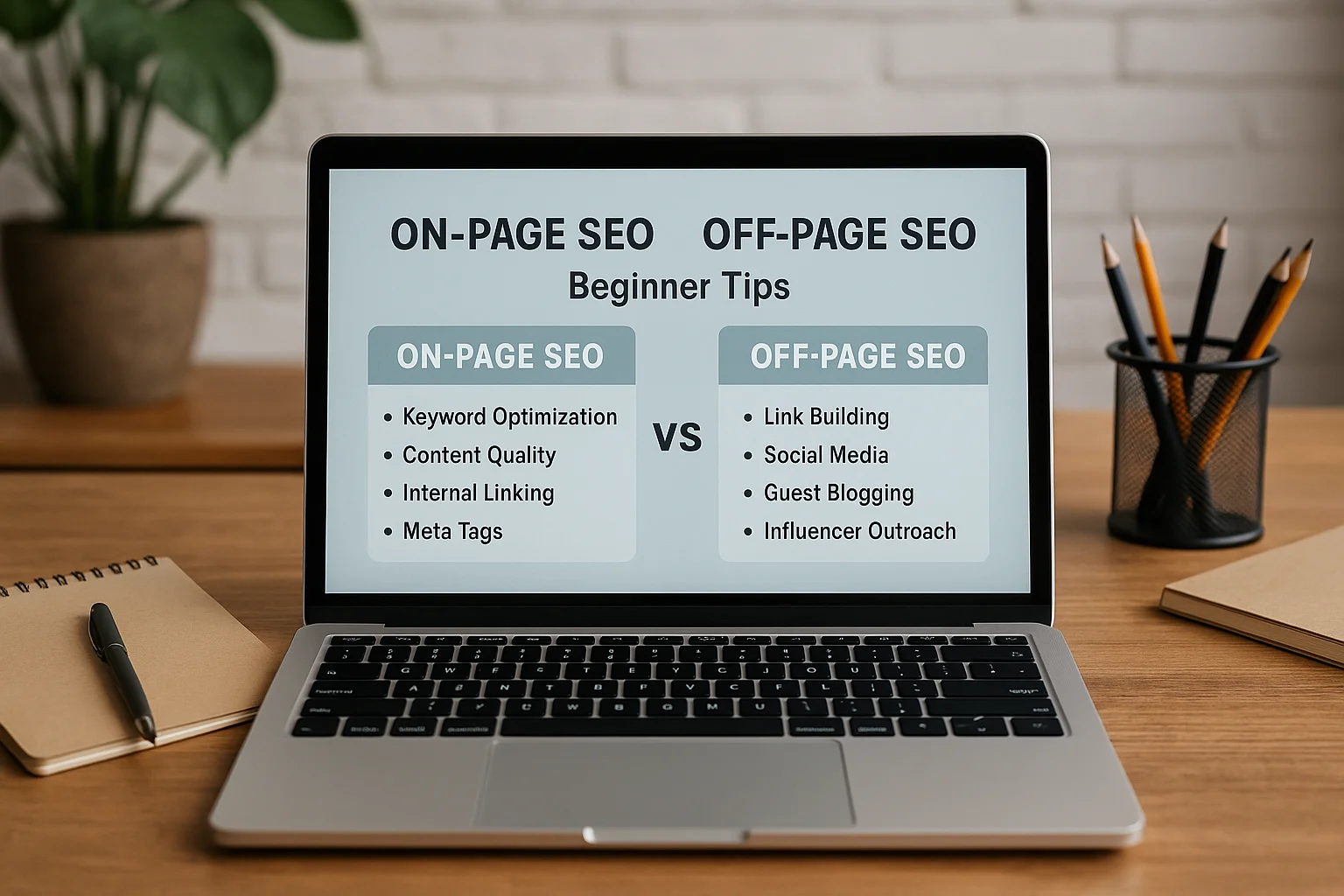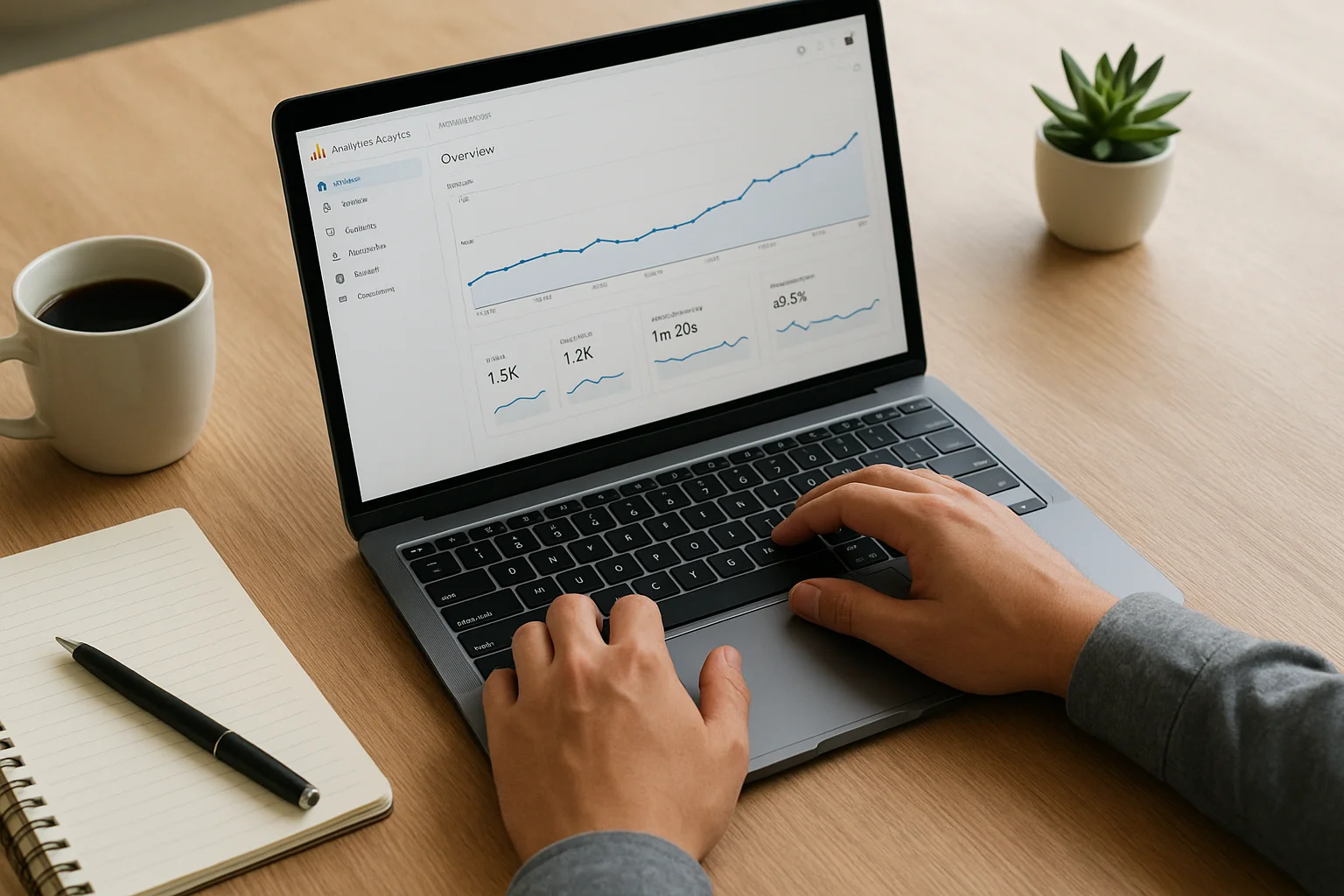How to Perform a Simple SEO Audit for Your Website

Check Your Website’s Accessibility
Ensuring your website is accessible to both users and search engines is the first critical step in an SEO audit. Accessibility issues can prevent search engines from properly crawling and indexing your site, which directly affects your rankings.
Ensure Your Site Is Crawlable
Start by verifying that search engines can access all important pages of your website. Use tools like Google Search Console to check crawl errors and see which pages are being indexed. Make sure there are no orphan pages (pages not linked from anywhere) that could be missed by crawlers.
Review Robots.txt and Sitemap
The robots.txt file tells search engines which pages they can or cannot crawl. Ensure that no important page is accidentally blocked. Additionally, submit a XML sitemap to Google and Bing to help search engines discover all your pages quickly. Regularly updating your sitemap ensures that new content is indexed promptly.
Test Mobile-Friendliness
With the majority of users browsing on mobile devices, search engines prioritize mobile-friendly websites. Use tools like Google’s Mobile-Friendly Test to identify issues such as unreadable text, small buttons, or horizontal scrolling. Ensuring a responsive design improves both user experience and SEO performance.
Check Site Architecture and Internal Linking
A clear and logical site structure helps search engines understand your content hierarchy. Make sure that important pages are accessible within a few clicks from the homepage. Use descriptive anchor text for internal links to guide both users and search engines to key content.
Evaluate Site Performance
Website performance is a key factor in both user experience and SEO rankings. Slow-loading pages can increase bounce rates and reduce the likelihood of your content being indexed effectively by search engines.
Measure Page Speed
Start by analyzing your page load times using tools like Google PageSpeed Insights, GTmetrix, or WebPageTest. Pay attention to metrics such as First Contentful Paint (FCP), Largest Contentful Paint (LCP), and Time to Interactive (TTI). Identifying pages with slow load times allows you to prioritize optimizations where they will have the greatest impact.
Optimize Core Web Vitals
Core Web Vitals are a set of performance metrics that Google uses to evaluate user experience. Focus on:
- Loading: Improve LCP by compressing images, leveraging browser caching, and minimizing render-blocking resources.
- Interactivity: Reduce TTI by optimizing JavaScript execution and avoiding heavy scripts.
- Visual Stability: Improve Cumulative Layout Shift (CLS) by setting explicit size attributes for images and embedding media carefully.
Identify Broken Links
Broken links, both internal and external, can negatively impact SEO. Use tools like Screaming Frog or Ahrefs to crawl your site and detect 404 errors or misdirected URLs. Fixing these issues ensures a smooth navigation experience and prevents search engines from seeing your site as unreliable.
Check Hosting and Server Performance
Your website’s server response time can significantly affect loading speed. Consider using reliable hosting, enabling compression (like Gzip), and utilizing a Content Delivery Network (CDN) to serve resources faster to global visitors.
Monitor Performance Regularly
Website performance can degrade over time as you add new content or features. Regularly check your pages with performance monitoring tools, set alerts for slow-loading pages, and maintain a consistent review schedule to ensure optimal speed and reliability.
Analyze On-Page SEO Elements
On-page SEO elements play a critical role in how search engines understand and rank your website. Optimizing these elements ensures your content is both relevant and discoverable.
Review Title Tags and Meta Descriptions
The title tag is one of the most important on-page SEO elements. It should accurately describe the page content and include your primary keyword. Keep it under 60 characters for optimal display in search results. Meta descriptions provide a summary for search engines and users. While not a direct ranking factor, a compelling meta description can improve click-through rates. Ensure each page has a unique and descriptive meta description under 160 characters.
Check Header Structure (H1, H2, H3, etc.)
Headers organize your content and help search engines understand the hierarchy and key topics. Each page should have a single H1 tag containing the main keyword. Use H2 and H3 tags to structure sections and subsections logically, and include relevant keywords naturally without overstuffing.
Evaluate Content Quality and Relevance
Search engines prioritize content that is high-quality, original, and relevant. Ensure your pages provide clear value to users, answer common questions, and are updated regularly. Include keywords naturally in the text, but focus on readability and context rather than density. Avoid duplicate content, as it can confuse search engines and dilute ranking potential.
Optimize Images and Media
Images and media enhance user engagement, but they also impact SEO. Use descriptive alt attributes containing relevant keywords, optimize file sizes for faster loading, and ensure media is properly embedded. Structured images and media help search engines understand content context and improve rich results potential.
Internal Linking and URL Structure
Internal links help search engines navigate your site and distribute link equity to important pages. Use descriptive anchor text and link to relevant pages naturally within your content. Ensure URLs are short, descriptive, and include target keywords where appropriate, avoiding unnecessary parameters or dynamic strings.
Assess Keyword Usage
Keywords remain a cornerstone of SEO. Properly analyzing and using keywords ensures that your content aligns with what users are searching for and increases the chances of ranking higher in search results.
Identify Target Keywords
Begin by identifying the primary and secondary keywords for each page. Use tools like Google Keyword Planner, Ahrefs, or SEMrush to find keywords with high relevance and adequate search volume. Focus on terms that match user intent rather than targeting highly competitive keywords that may be difficult to rank for.
Check Keyword Placement and Density
Once target keywords are selected, ensure they are placed strategically throughout the page. Include the primary keyword in the title tag, H1, first paragraph, and meta description. Secondary keywords should appear naturally in subheadings, body text, and image alt attributes. Avoid keyword stuffing, as it can lead to penalties and reduce readability. A balanced keyword density helps both users and search engines understand the topic.
Avoid Keyword Cannibalization
Keyword cannibalization occurs when multiple pages target the same keyword, causing confusion for search engines and diluting ranking potential. Perform a site audit to identify overlapping keywords and consolidate or differentiate content. Ensure each page has a unique focus keyword to strengthen overall SEO performance.
Analyze Long-Tail Keywords
In addition to primary keywords, leverage long-tail keywords that reflect more specific search queries. These keywords often have lower competition and higher conversion potential. Incorporate them naturally into headings, content, and FAQs to capture a broader range of search intent and improve targeted traffic.
Monitor Keyword Performance
Regularly track how your keywords are performing using tools like Google Search Console or third-party SEO platforms. Monitor changes in rankings, impressions, and click-through rates to refine your strategy, adjust content, and maintain relevance in search results over time.
Audit Backlinks and Off-Page SEO
Backlinks and off-page SEO play a crucial role in determining your website’s authority and search engine rankings. A strong backlink profile signals to search engines that your content is trustworthy and relevant.
Analyze Incoming Links Quality
Not all backlinks are created equal. Evaluate each incoming link based on domain authority, relevance, and trustworthiness. High-quality links from authoritative sites in your niche provide significant SEO benefits, while low-quality links may harm your rankings.
Identify Toxic or Spammy Links
Links from irrelevant or spammy websites can negatively affect your SEO. Use tools like Ahrefs, SEMrush, or Majestic to identify potentially harmful backlinks. Consider using Google’s Disavow Tool to remove links that could penalize your site.
Leverage Directory Submissions
Submitting your site to reputable online directories can help build high-quality backlinks. Focus on niche-specific and authoritative directories relevant to your industry. For example, you can use platforms like ShowMySites to discover directories where your website can be listed.
Monitor Anchor Text Distribution
Review the anchor text of your backlinks to ensure diversity and relevance. Avoid over-optimization with exact-match keywords, as it can trigger penalties. A natural mix of branded, generic, and long-tail keyword anchors helps maintain a healthy backlink profile.
Track Off-Page Performance
Regularly check your backlink profile using tools like Google Search Console, Ahrefs, or SEMrush. Monitoring metrics such as domain authority, number of referring domains, and link quality helps you identify opportunities to build new links and maintain a strong online presence.
Ready to showcase your project?
Join thousands of developers and entrepreneurs who have already listed their websites in our directory. Get discovered by potential users and grow your audience.
Free to list • Instant approval • No hidden fees
Related articles

How to Optimize Your Project Pages for Faster Google Indexing
Boost your project pages’ visibility by speeding up Google indexing. Learn actionable strategies from URL optimization to structured data, internal linking, and content tips for faster search engine recognition.

Quick Fixes for Google Indexing Errors
Struggling with Google indexing errors? This guide explores quick and practical fixes to help your pages appear in search results faster. Learn how to resolve common issues like “Crawled – Not Indexed,” blocked URLs, and duplicate content while ensuring your site remains fully optimized for long-term SEO success.

SEO Trends to Watch in 2025 for Startups
Discover the key SEO trends shaping 2025 and learn how startups can adapt to stay competitive. From AI-powered search and voice optimization to EEAT and zero-click results, this guide explores practical strategies to boost online visibility and long-term growth.

The Impact of Core Web Vitals on Rankings and Conversions
Core Web Vitals are key performance metrics that Google uses to measure user experience. They influence not only search engine rankings but also how visitors interact with your website. A fast, stable, and responsive site improves visibility, boosts engagement, and increases conversions. Understanding and optimizing these metrics is essential for businesses looking to grow online.

Local SEO for Small Projects: A Practical Guide
Local SEO is essential for small projects aiming to attract nearby customers. This guide covers practical strategies—from Google Business optimization and keyword research to managing reviews and local links—to help your business get noticed locally and grow effectively.

SEO Myths That Are Holding Back Your Project
Many businesses waste time on outdated SEO advice. From overvaluing keywords to chasing low-quality links, myths can stall your growth. This post debunks common SEO misconceptions and shows what strategies truly drive results.

On-Page vs Off-Page SEO: A Beginner’s Guide
SEO can be confusing for beginners, but understanding the difference between On-Page and Off-Page SEO is essential. On-Page SEO focuses on optimizing your website’s content and structure, while Off-Page SEO builds authority through backlinks and online presence. This guide breaks down the basics to help you start improving your site’s search rankings today.

The Importance of Site Speed for SEO and User Experience
Site speed is a critical factor for both search engine rankings and user experience. Slow-loading pages frustrate visitors, increase bounce rates, and hurt conversions. This article explores why speed matters, how it affects SEO, and practical tips to make your website faster.

Using Google Analytics to Track SEO Performance
Google Analytics is a powerful tool to track and improve your SEO strategy. From monitoring organic traffic to analyzing user behavior and conversions, it provides insights to optimize your website and boost search engine performance. Learn the key metrics, reports, and tips to make data-driven SEO decisions.